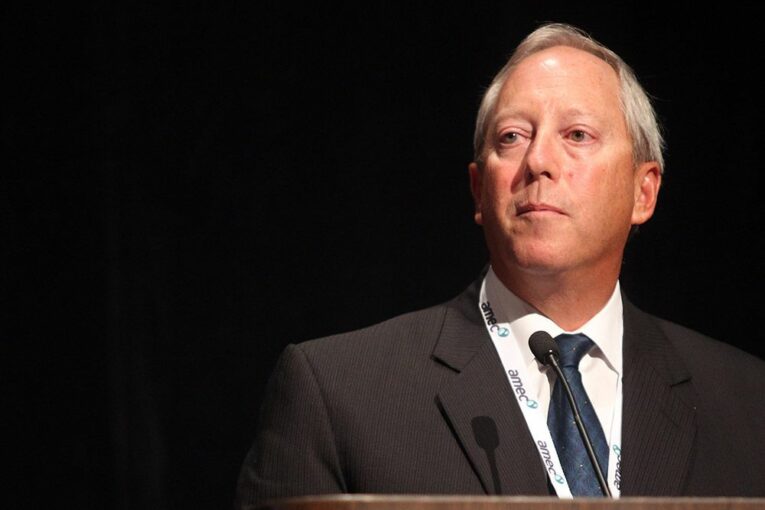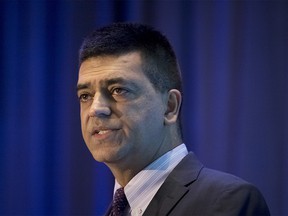
Canadian petroleum producers are expected to crank up their capital budgets by 22 per cent this year, spending an additional $6 billion above 2021 levels.
It’s a healthy jump.
Yet, with oil trading above US$85 a barrel and benchmark U.S. natural gas prices hovering near $4 per mmBTU, why isn’t spending heading even higher?
For some Canadian companies, the answer lies in a nasty four-letter word: debt.
“We are trying to drive our balance sheet to zero debt,” said Birchcliff Energy CEO Jeff Tonken, whose company expects to be debt-free in early 2023 if commodity prices hold.
“I don’t believe in crystal balls, they don’t work. And I don’t believe in the forecasters who know where commodity prices are going. But I do know if you have no debt on your balance sheet, you remove a significant amount of risk to your business.”
On Thursday, the Canadian Association of Petroleum Producers (CAPP) projected total capital spending in 2022 will increase to almost $32.8 billion, up from $27 billion a year earlier.
Spending in Alberta will jump by 24 per cent.
The group expects conventional oil and natural gas investment will rise by 17 per cent to $21 billion, while oilsands operators will bolster their capital programs by a third, and offshore spending will stay largely flat.
Surging commodity prices have stuffed the coffers of oil and gas companies in the past year. It’s giving them options on what to do with their escalating cash flow levels, such as increasing drilling levels, returning money to investors, buying assets or chopping debt.
“We are seeing companies that are doing very substantive changes to their balance sheets and their debt (levels) are far less than they have been historically,” said CAPP president Tim McMillan.
Data from Wood Mackenzie is forecasting global upstream industry spending will hit US$525 billion this year, with Canada garnering about 6.4 per cent of the spending pie, down from about 10 per cent in 2014, CAPP noted.
The energy consultancy sees 40 large oil and gas projects being sanctioned around the world this year, but none in Canada.
Since the start of this year, benchmark U.S. crude prices have climbed more than 15 per cent. West Texas Intermediate crude for February delivery closed Thursday at $86.90 per barrel, while U.S. natural gas prices sat at $3.65 per mmBTU.
The industry has seen profits soar in the past 12 months with the return of stronger energy prices.
A report by BMO Capital Markets this month noted free cash flow levels for the North American petroleum producers that it tracks skyrocketed to $140 billion last year from less than $10 billion in 2020.
In turn, total debt levels fell 18 per cent to $235 billion last year.
“We think paying down debt will be a lower priority in 2022 for most, which means accelerating cash returns to investors,” said the BMO report.
Some of that is already occurring.
Tourmaline Oil Corp. announced this week it will increase its quarterly base dividend by 11 per cent, and issued a special cash dividend of $1.25 per share.
A handful of producers are debt-free already, such as Headwater Exploration and Kelt Exploration. Advantage Energy said last month it expects to be debt free in the second half of this year.
“In 2021, it was the year of debt repayment, and 2022 will be the year of (share) buybacks,” said analyst Jeremy McCrea of Raymond James.
“You will see debt continue to go down, just as they try to figure out what to do with the cash flow here. In a weird way, it’s a good problem to have.”
Kelt Exploration chief financial officer Sadiq Lalani said the company ended last year with almost no debt. While that’s not Kelt’s main focus, it does provide benefits for producers who are tied to volatile oil and gas prices.
“If you do (have) an unforeseen event . . . you are not at the mercy of your lenders to make decisions that you’d rather not make,” Lalani said.
“With a clean balance sheet, it just allows you to move on opportunities as they arise.”

Inflation is causing Canadian producers to spend some additional money in 2022, although labour shortages in the oilfield services industry are serving as an impediment to growing output.
Companies are also facing continued pressure from investors to show capital discipline and not increase production, but return more money to shareholders’ pockets.
Many companies are opting for a combination of steps — higher spending, returning money to investors and strengthening their balance sheets.
Cenovus Energy, which plans to increase its capital spending by 12 per cent to about $2.8 billion this year, is anticipating more debt being repaid in 2022.
The country’s third-largest producer, which reported net debt levels of $13.3 billion in the first quarter of last year, says it has a line of sight to drop debt below $8 billion in ’22.
For Tonken, there’s still more work to do to drive Birchcliff’s debt levels to zilch.
Earlier this week, the mid-sized producer approved about a 10 per cent increase to its capital budget this year — pushing it to about $250 million — and forecasts average production will remain flat.
Birchcliff targets its net debt dropping to about $185 million by year’s end.
“Right now I have windfall commodities and I am just going to pay the debt down. It takes the banks out of the equation and it makes us a strong company,” Tonken said.
“He who has no debt, has no risk. And if you have a really solid, low-cost business, then you become a straight commodity play.
“If prices go up, you make a fortune. And if commodities go down, we have a low-cost business than can survive.”
Chris Varcoe is a Calgary Herald columnist.
You can read more of the news on source
